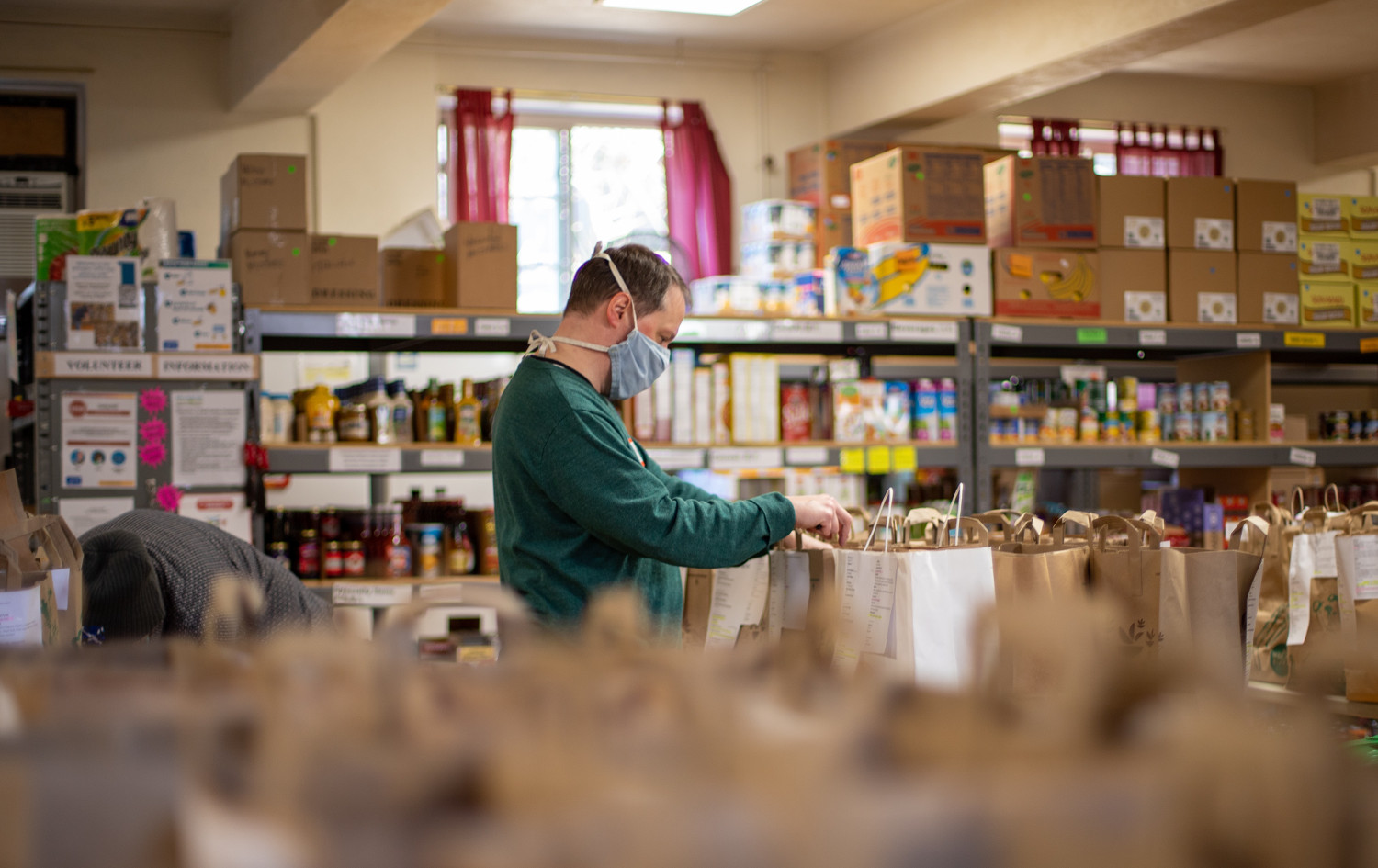A recent study from Duke University and WhyHunger finds that 82 percent of hunger relief organizations in the United States served more first time clients during the COVID-19 pandemic than during previous years. While unprecedented demand revealed faults in the food system, researchers also identify opportunities to develop more resilient hunger relief programs.
According to Feeding America, 45 million people experienced food insecurity in 2020—up from 35 million in 2019. The organization finds that food banks, which bore some of the greatest pressure, served 55 percent more people nationwide in March 2021 than before the pandemic.
To understand the impacts of greater demand on food banks, frontline, and advocacy organizations, the anti-hunger nonprofit WhyHunger conducted a survey in collaboration with Duke University’s World Food Policy Center, The study analyzed the needs of emergency food organizations, barriers to providing consistent food access, and how relief programs are shifting their priorities. The study also recommends policies that support systemic change to reduce food insecurity.
Preliminary results from the study show a 79 percent increase in demand for existing food aid services during COVID-19. Despite this demand, 54 percent of organizations were forced to suspend programming like community meals and volunteer services. Organizations also had to contend with new processes, including food delivery, contactless pickup, and virtual communication.
The study also finds that loss of volunteer base is the largest operational barrier to meeting demand. According to Feeding America, food banks relied on nearly 2 million volunteers per month before the pandemic. But this reliance on volunteerism makes relief groups vulnerable to unpredictable external factors that significantly affect their labor capacity.
“Volunteerism allows the American public to release a moral safety valve—it feels good for the individual volunteer, looks good for the corporation sponsoring volunteer days, and can be a distraction from looking at the root causes of food insecurity and advocating for policy change,” says Alison Meares Cohen, Senior Director of Programs at WhyHunger and co-leader of the study.
The study also highlights systemic issues contributing to food and nutrition insecurity, which food banks must also grapple with. These include structural racism, undervalued labor, the inaccessibility of healthy foods, and the prevalence of affordable, yet highly processed foods and beverages.
“The private charitable emergency feeding system in the U.S.—the largest and most sophisticated in the world—has historically never been able to meet the demand or make a real dent in the rate of food insecurity, which has hovered between 11 and 12 percent of the population over the past 30 years,” Cohen tells Food Tank. “Increasingly, this knowledge is driving the non-profit anti-hunger sector to recognize that poverty is the root cause of hunger, and that paying workers a living wage is an essential policy change that would significantly reduce the need for chronic reliance on food banks.”
In response to the COVID-19 pandemic, organizations are planning to spend more time on advocacy work and leadership development, organizing, and systems-level campaigning. To have the biggest impact, the study recommends organizations fight for increasing the federal minimum wage, universal school meals, and increasing SNAP allotments to accurately reflect the cost of healthy eating. The researchers also propose greater investment in local food and farm economies, so that marginalized communities have more control over their food systems.
But Cohen worries that the public doesn’t always understand the importance of root-cause programming. This can make it difficult for anti-hunger organizations to fundraise and expand their work beyond alleviating immediate hunger. Nevertheless, she maintains these programs are essential.
“The inequities in our food systems that perpetuate poverty and food insecurity were in place long before the novel coronavirus outbreak,” Cohen tells Food Tank. “Stress of the pandemic on the emergency feeding sector intensified the awareness that addressing root causes and long-term solutions is a necessity.”










